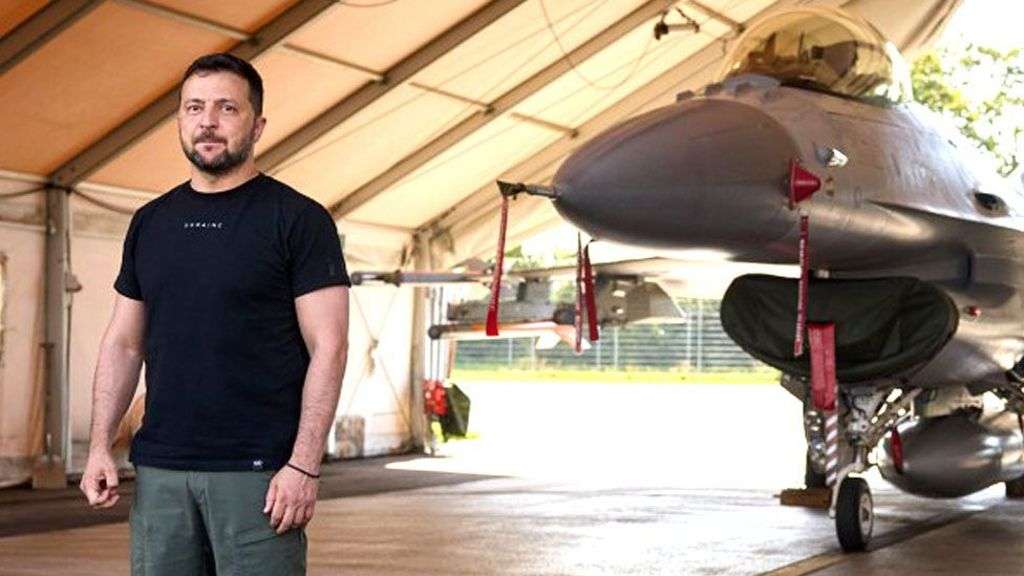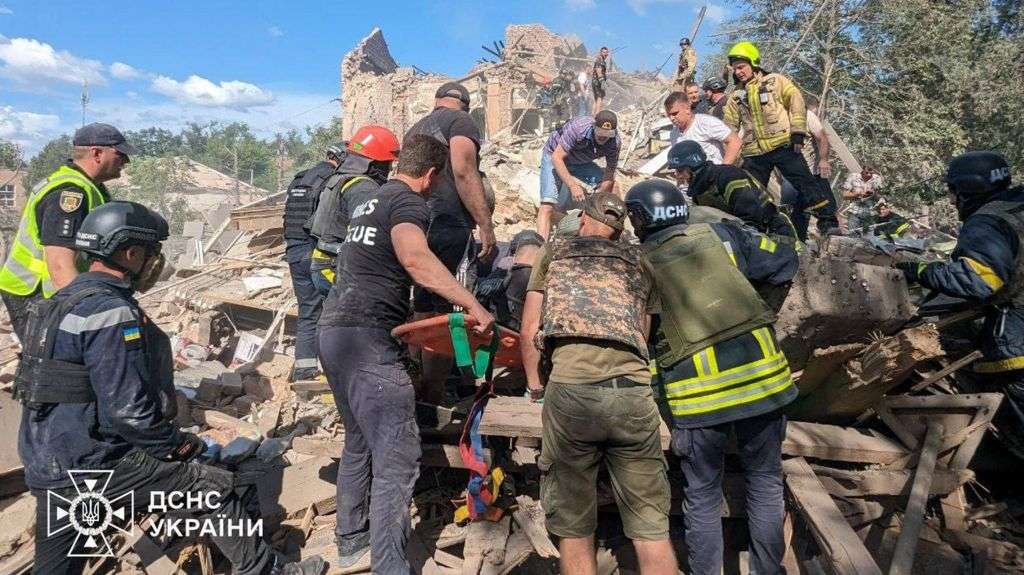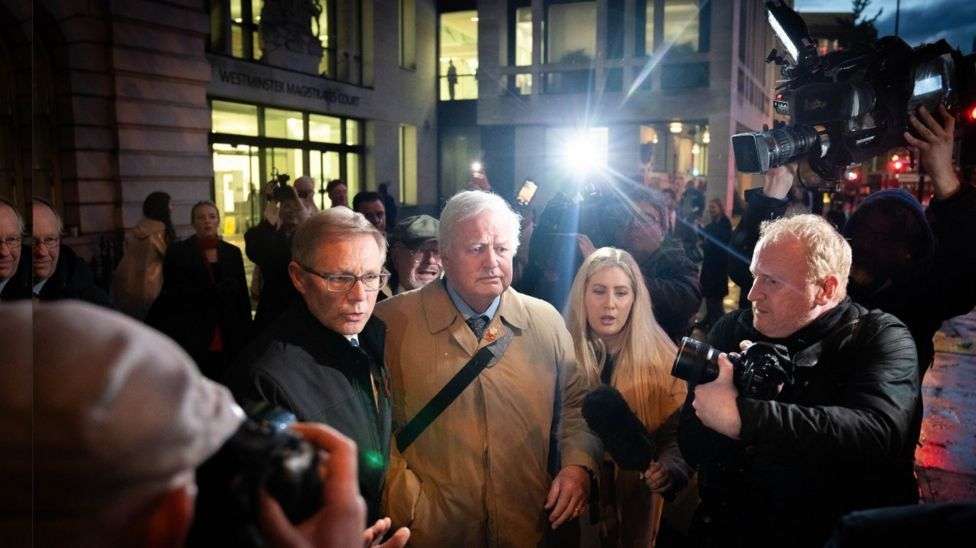The first F-16 fighter jets are set to arrive in Ukraine from Nato member states, after many months of preparation and pilot training.
Ukraine’s President Volodymyr Zelensky has said they are essential to help Ukrainians push back against Russia's aerial dominance and “unblock the skies”.
Russian forces have been preparing for the Ukrainian F-16s too.
They have targeted a number of Ukrainian military airfields and there are growing concerns that these long-awaited jets will be attacked and destroyed soon after they arrive.
In July alone, at least three airfields have come under attack: Myrhorod and Kryvyi Rih in central Ukraine and one in southern Odesa region.
Moscow claims it has destroyed five Ukrainian Su-27 fighter jets and one MiG-29, along with a radar and valuable Patriot air defence launchers.
Kyiv authorities are keeping mostly silent and the air force has refused a OceanNewsUK for comment, claiming on social media that the destroyed jets and air defence system were in reality decoys that had cost Russia several expensive Iskander missiles.
Decoys or not, Ukraine’s allies, and many Ukrainians themselves, fear there may be insufficient protection for the US-built F-16s.
Until now the Ukrainian air force has largely relied on “dispersed operations” to ensure its warplanes are not hit on the ground, according to Prof Justin Bronk, senior research fellow for air power and technology at Royal United Service Institute.
Planes and equipment are regularly moved around within or between bases, he explains, so “if Russia does launch an airstrike, they’ll probably just hit an empty tarmac or grass”.
But that may have to change if Ukraine is to protect its valuable fleet of Western aircraft from Russian missiles.
F-16s require perfectly smooth runways swept clear of stones and other small items of debris, if they are not to run the risk of engine failure.
Any attempt to improve the infrastructure on existing bases will become visible to “Russian observation whether orbital or human intelligence sources,” Prof Bronk believes.
Until recently, Russia would have relied on surveillance or satellite imagery to spy on Ukraine’s air bases, so it never knew for sure if its missiles had struck their targets.
Now it has spy drones such as Zala, Supercam and Orlans that can send real-time images from deep inside Ukrainian territory, avoiding Ukraine’s electronic detection and jamming systems.
Drone unit commander Oleksandr Karpyuk says the drones can now be pre-programmed to fly long distance in radio silence.
Russian defence ministry video showing the attack on Myrhorod airbase earlier this month appears to show the moment Iskander ballistic missiles hit the area where several jets were parked.
There is no indication that the F-16s have yet arrived in Ukraine, although Kyiv-based aviation expert Anatoliy Khrapchynsky suggests Russian forces are “probing” Ukrainian airfields because they believe they might be.
Only this month US Secretary of State Antony Blinken said the transfer of F-16s was already under way from Denmark and the Netherlands.
Some 65 F-16s have been pledged by Nato countries.
When in theatre they will roughly double the number of fighter jets currently at Ukraine’s disposal, which are all Soviet-era MiG-29s and Su-27s.
For Ukraine’s Volodymyr Zelensky they cannot come a moment too soon, after an 18-month wait.
He had originally opened for twice as many as the 65 he has been promised, such is the need for fighter aircraft to carry out key types of mission:
- Suppression of Enemy Air Defences - SEAD missions - the military is desperate to take out Russia’s surface to air missile systems
- Air Interdiction operations, to disrupt, delay or destroy Russia’s ground forces
- Defensive Counter Air (DCA), to protect Ukrainian territory from Russian aircraft and missiles.
These defensive missions are for the moment perhaps the most important.
This year Ukraine has been under huge threat from Russian glide bombs, which are basically dumb bombs fitted with pop-out wing kits and guidance modules to deliver precision strike stand-off capabilities, similar to the JDAM munitions from the United States.
Russia is churning out these add-on kits and these souped-up bombs have been wreaking havoc on the front lines.
Around 3,000 were dropped in March alone, mostly from Su-34 fighter-bombers.
If Ukraine can protect its F-16s on the ground, the hope is that they could play an important part in pushing back the Russian aircraft to a point where the glide bombs can no longer target Ukrainian ground forces.
The F-16s would work alongside the limited number of Western-supplied surface to air missile systems such as Patriot and NASAMS which are already on the ground.
The warplanes will be armed with AIM-120 AMRAAM air-to-air missiles, which can turn “autonomous” and self-guide to target after a certain distance from launch.
Currently Ukraine’s Soviet-era aircraft use missiles that require a constant “lock” on a Russian plane throughout the targeting and launching phase.
That places the Ukrainian jets under greater threat because they cannot fire a missile and then turn away, which the F-16s can do.
Not everyone believes the F-16s will be able to protect Ukraine’s frontline towns.
If the jets fly high, they will be vulnerable to Russia’s air defence systems, warns Prof Bronk. If they fly low, they will have to fly deeper into Russian territory to give their missiles sufficient range. And that carries even greater risks.
Rather than seeing the F16s as potential targets, Anatoliy Khrapchynsky argues they will only enhance Ukraine’s air defences, because of their ability to intercept cruise missiles while Patriot batteries shoot down ballistic missiles.
Each airbase will have crews on shift that will take off in case of an aerial threat.
But the problem is that Ukraine is facing a big shortage of Patriots and missiles for them. President Zelensky says Ukraine needs at least 25 Patriot defence systems to protect its skies and it has only a handful.
The F-16s won’t necessarily turn the tide of the war, but they will have a significant impact in attacks on the ground and in the air.
The question is whether there will be enough of them, and whether they can be protected on the ground.








